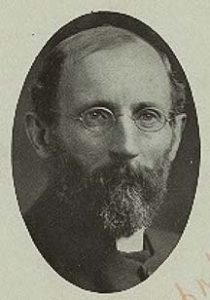Continuing from Ascension of Isaiah: Other Questions. . . .
. . .

In this post I address what some will consider is the strongest reason for doubting that the pocket gospel (11:2-22) portraying the birth of Jesus, his miracle working and crucifixion) was part of the original text. If it had not been part of the original text then the Asc. Isa. stands as a document lending some support to the view that the earliest Christian gospel, or that known to Paul, did not imagine an earthly sojourn or crucifixion for Jesus, but rather that his crucifixion was entirely at the hands of demonic powers in an other worldly dimension. This is the view of Earl Doherty and Richard Carrier (and Paul-Louis Couchoud in the early twentieth century). In this series I am looking again at the arguments that point to the Asc. Isa. as a support (not a foundation!) of this thesis, especially as they have been elaborated and strengthened by James Barlow. (I think the points made by Barlow are very strong. They are worth discussing and reviewing.)
R. H. Charles, author of a major study (1900) on the Asc. Isa.‘s manuscript lines along with commentary on their similarities and differences, set out several reasons for accepting the originality of 11:2-22, even though it appears only in an Ethiopian manuscript and is omitted by extant Latin and Slavonic versions. Charles reasoned that other sections in the Asc. Isa. led a reader to expect to find a narrative like the pocket gospel, thus strongly suggesting that it is surely an integral part of the first composition.
Next from the command which Isaiah hears given to Christ to descend to the earth and to Sheol (x. 8), and afterwards to ascend therefrom (x. 14), we naturally expect Isaiah to witness these events in the vision in xi. [i.e. 11:2-22], seeing that he witnesses all else that is mentioned in x. 8-14.
(Charles, xxii-xxiii)
Here is that passage that Charles says leads us to expect to see the account of Jesus’ birth to Mary and Joseph, his miracle-working and crucifixion on earth:
On 10:8 – The manuscript line that contains the pocket gospel of 11:2-22 (the Ethiopic) is the only one with “descend to the firmament and that world”. The manuscript line without the pocket gospel reads only, “descend to that world“, not to the “firmament” of that world.
On 10:10 – The shorter reading in the manuscripts without the pocket gospel omits verse 10. Verse 10 is found only in the manuscript line also containing the pocket gospel. Charles comments that the command for the Beloved to become like the death angels in Sheol (in brackets) is an interpolation that makes no sense in the narrative:
This last statement I have bracketed, as the release of the souls in Sheol could not have been effected without a recognition of Christ on the part of the angels of Sheol. (Charles, p.70)
8. ‘Go forth and descend through all the heavens, and thou wilt descend to the firmament and that world: to the angel in Sheol [=angel of death] thou wilt descend, but to Haguel [=Abaddon or Gehenna] thou wilt not go.
9. And thou wilt become like unto the likeness of all who are in the five heavens. 10. And thou wilt be careful to become like the form of the angels of the firmament (and the angels also who are in Sheol).
11. And none of the angels of that world shall know that Thou art Lord with Me of the seven heavens and of their angels. 12. And they shall not know that Thou art with Me, till with a loud voice I have called to the heavens, and their angels and their lights, even unto the sixth heaven, in order that you mayst judge and destroy the princes and angels and gods of that world, and the world that is dominated by them:
13. For they have denied Me and said: “We alone are and there is none beside us.”
14. And afterwards from the angels of death Thou wilt ascend to Thy place, and Thou wilt not be transformed in each heaven, but in glory wilt Thou ascend and sit on My right hand.
I agree with James Barlow that there is little basis for Charles’s reasoning here. There is surely little in the above section from chapter 10 to prepare a reader for an account of Jesus’ miraculous birth to Mary. One has to agree with Barlow that Charles is surely reading the canonical narrative into the text here.
Yet there remains a catch, I think. The manuscripts without the pocket gospel are understood by Doherty, Carrier, Barlow, to be better representations of the original text. Yet it is those shorter manuscripts that also state that the Beloved is to descend “to that world” — not to the firmament above that world. (See side box above.) That sounds to me like the Beloved is to stand on earth. Continue reading “Ascension of Isaiah: More Questions”
